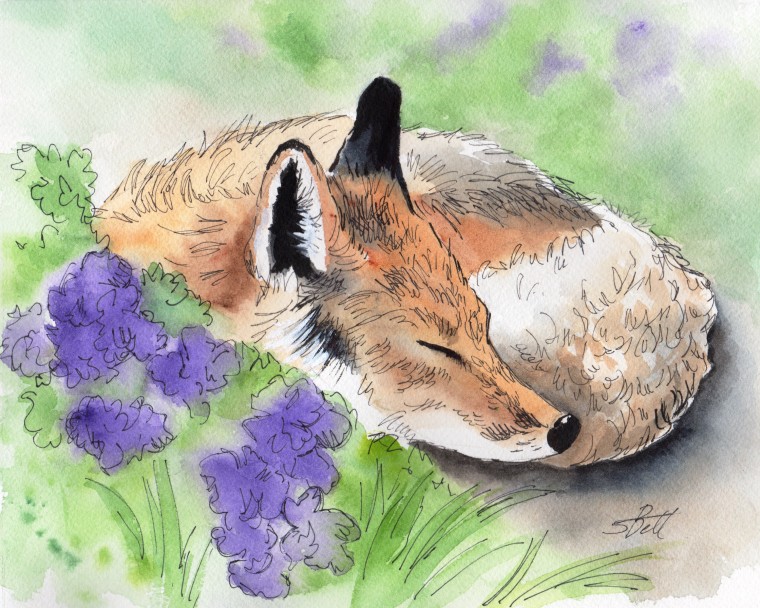
Line and wash, also known as pen and wash, describes art created combining two traditional types of media: ink and watercolor. It refers to the method of applying washes of color to a line drawing in ink. While many illustrations are created using this technique (such as the books by Beatrix Potter), it can also be used for creating beautiful fine art.
Although there are no set “rules” you have to follow, here are some general techniques many artists use.
For the wash — the colored portion of your picture — you can use traditional watercolors. You might also try acrylics thinned with water, or even thinned inks. Because you’re using a medium that requires water, choose a paper that is strong enough not to buckle. And because you’ll be drawing on it as well, make sure the paper is smooth enough to use with a pen. You don’t have to use watercolor paper – try different types of paper to find one that suits you best. I’ve been using Canson’s Mix Media art paper lately, and it works well with smaller pieces that don’t use a lot of water.
For the line, use a pen with waterproof ink that won’t smudge. A dip pen has nibs you can change out to get the size you need, but it needs regular cleaning. Claudia Nice describes these pens and how to use them in detail in her book Creating Textures In Pen & Ink With Watercolor. Because I like something that’s easy to clean and easy to take care of, I prefer using art pens such as Sakura’s Pigma Micron pens or Koh-I-Noor Nexus studio pens. Art supply stores offer many other brands of disposable pens you can try.
Depending on the picture you want to create, you could begin with the ink drawing and then apply the watercolor paints, or you could start with the wash and then add the ink. I usually start with the color, as sometimes the lines become a little dull under the paint. But whatever method you choose, be sure to let the first type of media dry before adding the second one.

Please note: Only family-friendly comments will be published.